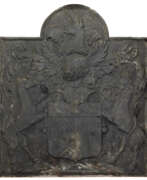Period of Louis-Philippe I
_by_Winterhalter.jpg)
Period of Louis-Philippe I
The Period of Louis-Philippe I, spanning from 1830 to 1848, marks a unique chapter in French history. Louis-Philippe I, also known as the Citizen King, ascended the French throne following the July Revolution of 1830. His reign over France, known as the July Monarchy, was seen as a shift from the conservative Bourbon Restoration to a more liberal constitutional monarchy.
Born into the Orléans branch of the House of Bourbon, Louis-Philippe distanced himself from the traditional monarchy. He styled himself as the "King of the French," a title emphasizing his popular sovereignty rather than divine right. His government was primarily supported by the upper bourgeoisie and pursued policies that favored the middle-of-the-road approach, balancing between conservative and radical interests.
Culturally, the July Monarchy was a period of significant artistic and architectural achievements. Louis-Philippe was passionate about history and initiated the transformation of the Palace of Versailles into a museum dedicated to the history of France. This cultural project, though unfinished, left a lasting imprint on Versailles.
The era saw political challenges, with growing discontent among different social classes. Despite initial efforts towards broad-based reform, Louis-Philippe's rule increasingly appeared more conservative, especially under the influence of statesman François Guizot. The king's popularity waned amid economic troubles and political unrest, culminating in his abdication following the Revolution of 1848.
The Period of Louis-Philippe I remains a subject of interest for collectors and experts in art and antiques. To stay informed about sales and auction events related to this period, sign up for updates. Our service offers exclusive insights into an era that significantly influenced French history and culture.
| Country: | Europe, France |
|---|---|
| Start of the period: | 1830 |
| End of the period: | 1848 |







